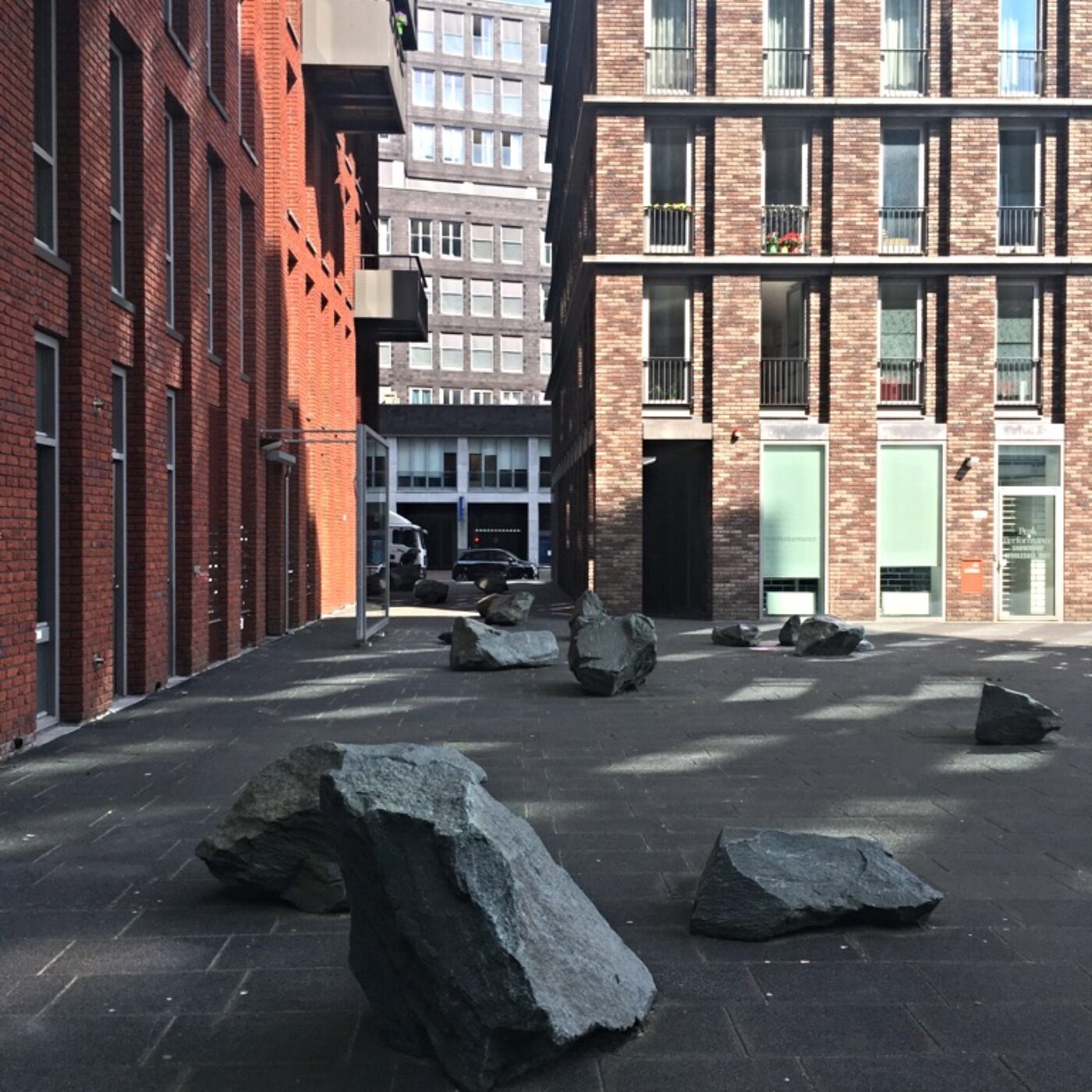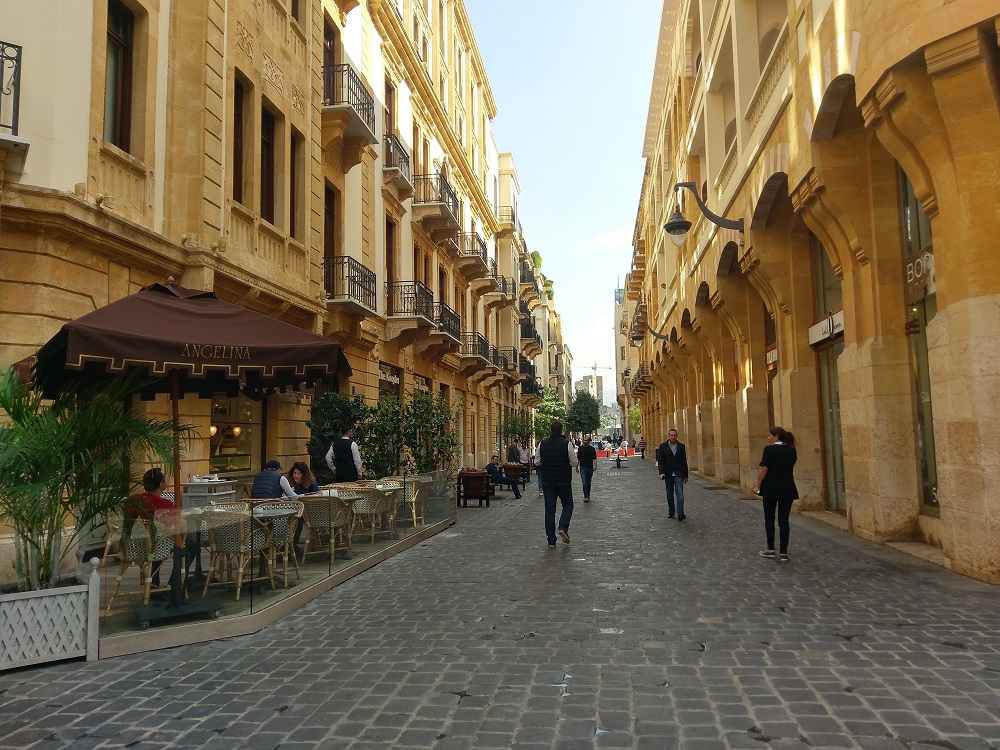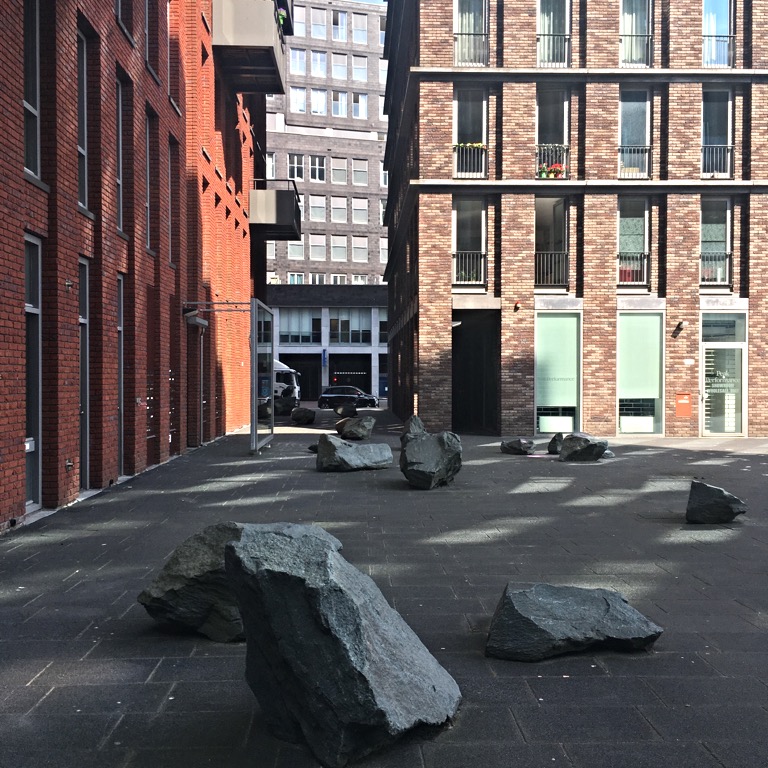Smooth City is the New Urban

Nowadays, it seems to be everywhere – the urban environment that feels smooth, polished and perfect. All buildings seem either new or renovated, and are generally in an excellent condition. Its public spaces are well-designed, well-maintained, clean and safe, if you conform to the rules. All spaces seem to be scripted according to the dominant norms and the needs of capital, and are populated by a socially, culturally and aesthetically homogenous crowd. New technologies offer seamless, on-demand services for almost everything.
A closer look does not reveal any aberrations or abnormalities. There don’t seem to be any abandoned properties, undefined elements or forgotten corners. No alternative narratives, ideas or (sub)cultures have been allowed to make a claim on, intervene in or transform urban spaces, unless they have been neatly encapsulated and made servient to the dominant script. While tensions and confrontations are only allowed to surface beyond its immediate boundaries, it is represented to the outside world as a wealthy, successful, consumable and predominantly white environment.
Welcome to the Smooth City. The urban condition that has become increasingly common over the last decade, to the extent that it suddenly seems to be the dominant state of affairs in many cities around the world. The Smooth City can occur in different intensities, such as the rather extreme variety described above, or in an urban environment that rapidly starts to look like something along those lines. It can emerge in the form of an ‘upgraded’ existing urban area, but also originate as a newly built neighbourhood or comprehensive redevelopment scheme.
In the cities of the Global North, it’s common nowadays that entire inner cities operate according to the ‘logics’ of the Smooth City, while in the South it generally remains limited to certain, interconnected pockets such as isolated malls and gated communities. This sudden rise of the Smooth City constitutes a social, economical and cultural take-over of cities around the world, that is of an unprecedented scale. The fact that ‘urban’ no longer means raw, edgy and conflictual but smooth, perfect and happy can be seen as a landmark shift in urban history.

Of course, the Smooth City does cater to people’s need for a clean, well-functioning, safe, maintained and prosperous urban environment, free from trouble, danger and crime. However, it can also be a highly normative, controlling and arguably oppressive environment, in which gradually all opportunities for productive friction, sudden transitions or subversive transgressions have been eliminated. Here, it’s almost impossible to leave one’s own traces, or intervene according to one’s own ideas and desires.
In most cases, the Smooth City’s main qualities also come at a certain price, which makes accessing, participating and enjoying its seamless experience an exceptional privilege. Those who cannot afford it are mostly excluded from its advantages, and are stuck in the large, leftover urban zones, or the Unsmooth City. The Smooth City’s existence hence fragments the urban landscape, while its smooth operation to a large extent relies on the availability of the Unsmooth City. Whether the Smooth City’s counterpart is in the same metropolitan area or on the other side of the world, it is often much needed to house its workers, produce its consumer goods, or process its waste.
It’s not the first time in history that the middle-classes sought to create an urban environment emptied of all things poor, ugly and dirty. In the past, they often left the traditional urban cores to find their smooth Arcadias elsewhere. Already in the 17th century the European elite were building communities in the countryside in order to escape the overcrowded inner cities. Also Ebenezer Howard’s plan for the Garden City or the suburbanisation wave of the second half of the 20th century should be seen in this light.
There have also been numerous previous attempts to restructure the existing city into a smooth urbanity. The Hausmannisation of Paris is an early experiment in which the chaotic, medieval urban fabric was radically reorganised to make way for middle class consumption and military control. Later, the Modernists dreamt of building a smooth, new world in lieu of the existing city, where all functions would be strictly separated, everything would be easily accessible by car, and sunlight would reach every corner. Their rigorous tabula rasa redevelopment plans would in practice be met with increasing levels of popular resistance, before it finally went out of fashion. However, Smooth City’s new type of incremental urbanism, gradually incorporating and taking full control of the existing urban fabric, freezing it in time and adding new parts here and there, seems to be much more successful and is now rapidly spreading around the world.
Over the last decade or two, early manifestations of the Smooth City and phenomena contributing to its development have already been observed and described. Closely intertwined with the emergence of the Smooth City is the hotly debated topic of gentrification, which is strongly related but not exactly the same, as it specifically refers to the process in which lower income groups in a certain area are replaced by higher income groups. Often, an area is smoothened out by local authorities in order to make it more attractive for the middle class and induce gentrification, while in its turn, the gentrification of a neighborhood results in, for example, large scale urban upgrading and more upmarket retail developments, and hence the smoothening of a certain area.
Then, urban sanitization refers to the government’s efforts to clean up the urban environment, for example by redeveloping dilapidated structures and restructuring public spaces. Architecture critic Mark Minkjan describes it as “making the city more palatable by removing elements that are likely to be unacceptable or controversial”. Likewise, urban beautification, at times an official policy since as early as the mid 19th century, tends to focus on improving the quality of both existing and yet-to-be-constructed buildings.
Disneyfication hints at urban spaces becoming more like the controlled and scripted environments of theme parks, while mallification refers to a similar process in which the characteristics of the shopping mall are taking precedence over the development of the city. Rem Koolhaas’ notion of junkspace (“the product of the encounter between the escalator and air-conditioning”) focuses on the expansion of these mall-like spaces themselves, which “depend on the removal of the critical faculty in the name of comfort and pleasure’ and ‘could easily engulf a whole city”. While junkspace’s proliferation does contribute to the growth of the Smooth City, the concept didn’t foresee the renewed fetish with historical fabrics, whether renovated or simply newly built.
Equally related are Koolhaas’ ideas on the generic city, the homogenous urban zone without a clear history or identity, with, however, “one neighborhood celebrating the hyper-renovated remnants of the past”. While increasing homogeneity of the urban environment is a key element of the Smooth City, critics of the generic city, such as Lieven de Cauter, have again argued that this ‘celebration of the past’ is being underestimated. According to him, larger parts of the homogenizing urban areas are undergoing a process of ‘mediterranisation’ and hence become an ‘urban tableau’ or a ‘monofunctional, streamlined decor’, in which ‘the drama of daily life is eliminated’.
While all these concepts describe different elements of Smooth City’s multi-faceted global rise today, in reality it often seems like an all-encompassing and hermetic phenomenon. Still, it makes one wonder about the evanescence of its perfection, or the possible fragility of this ‘streamlined decor’. In theory, the Smooth City could indeed be quite an unstable condition, as it partly depends on the authorities’ capability to maintain a matrix of control over urban space. When they fail to constantly police public space or push owners to renovate properties, a process of ‘unsmoothening’ might unfold. While this is certainly possible, in practice the Smooth City seems to be rooted in various particular strong political and cultural shifts, which firmly establish its presence.
Key to the rise of the Smooth City is the growing hegemony of neoliberal urbanism over the last two decades, in which a central aspect is the dominance of profit-driven and private sector-led urban development, often combined with the (local) government’s prioritization of economic development, foreign investments and city branding. Other important elements are the privatization of (social) housing, local services and public space, the commercialization and festivalization of urban space and culture, and forms of militarization through increasing surveillance and police repression.
These developments by themselves already contribute to the smoothening of the city, in particular when they occur simultaneously, but also often lead to the displacement of relatively poor and marginalized groups and an influx of wealthier groups, which further induces processes of smoothening. While neoliberal urbanism is in essence a political project, it has paradoxically given rise to the post-political city, in which ‘the urban’ has increasingly become a commodity and urban politics are deliberately undermined in favor of technocratic-economic measures. Its inhabitants are treated as consumers rather than citizens, who also need to work increasingly efficiently, which fuels the demand for smooth, friction-free urban spaces.

The establishment of neoliberal urbanism is strongly powered by a cultural transition in which the middle and upper classes have developed a renewed preference for highly urban environments. They are returning to the city in large numbers to either live there permanently, or to visit it temporarily (the ‘citytrip’) from a more suburban environment. By doing so, they are bringing suburban lifestyles and aesthetics with them, and, to be compensated for their willingness to pay dearly for this experience, demand suburban qualities of the environment, such as cleanliness or zero tolerance towards vandalism.
Another more cultural shift stimulating the rise of the Smooth City, likely a response to the rapid acceleration of disruptive political and technological developments of this age, is a vaguely discernable turn in mainstream culture in which a more polished spectacle, conformism and control are central aspects. This can be seen, among others, in the ongoing concentration of cultural life into a few dominant brands, which often combine slick, ephemeral aesthetics with ‘local’ and ‘authentic’ elements. Crucial is also the integration of mobile technologies into our daily lives, allowing for constant communication, smooth access to all kinds of services, and curated self-promotion through social media’s filtered aesthetics, or the decline of DIY-culture in computation, fashion or construction, and the simultaneous incorporation of DIY-aesthetics in consumer products.
These interrelated political and cultural transitions are pushing the balance in favor of the Smooth City, which continues to result in unequal, hermetic and scripted environments, excluding many and pushing others into precarity. For now, the end is not yet in sight, in particular with new technologies making an additional contribution to its further development. The digital infractions on our privacy that often come with these technologies, both voluntarily and involuntarily, will influence our behavior in the Smooth City, and turn us into actors in our own urban reality show. Further smoothening of our lives in the city will originate in the integration of some of these technologies with our bodies. Hypodermic data chips, such as a digital wallet under one’s skin, Google contact lenses providing an augmented reality of the city, or the installation of integrated digital personal rating systems, are all about to become a reality.

These political, cultural and technological developments are all rather strong and arguably beyond the grasp of the average spatial professional. However, some modest forms of opposition could emerge from the notion of ‘porosity’, or the idea that it might be possible to create, organize or design cracks in the smooth surface of the city. These cracks could take the form of unstable, autonomous spaces, which could then be sustained, stabilized, and collectively shaped. Following the theory of the broken window, it will be easier – if one distortion has been made – to be the second. The ‘Porous City’ is still far away, but could provide an alternative horizon, beyond the hegemony of the Smooth City.
 This article relates to Volume #52, ‘The End of Informality’.
This article relates to Volume #52, ‘The End of Informality’.